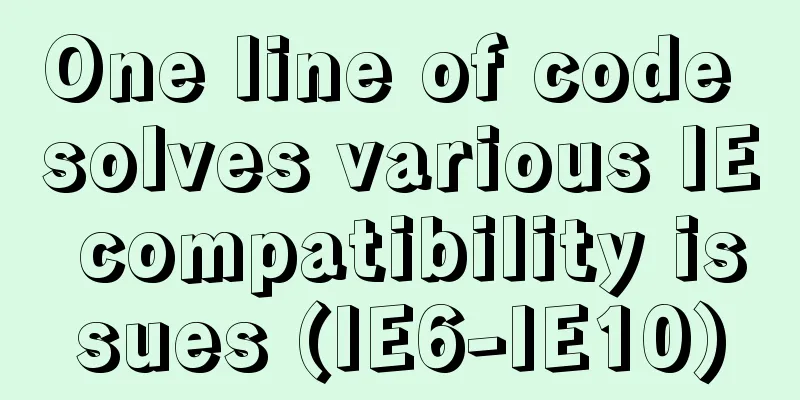A brief analysis of the responsiveness principle and differences of Vue2.0/3.0

PrefaceSince vue3.0 was officially launched, many friends have switched to vue3.0. Here I will write down the principles of 3.0 and 2.0 and the differences between them that I have summarized for your own learning. Step 1: The responsive principle of vue2.0First look at the explanation on the official website: When you pass a plain JavaScript object to the data option of a Vue instance, Vue will iterate over all the properties of the object and convert them all to getters/setters using Object.defineProperty. Object.defineProperty is an unshimmable feature in ES5, which is why Vue does not support IE8 and lower versions of browsers. These getters/setters are invisible to the user, but internally they allow Vue to track dependencies and notify changes when properties are accessed or modified. The problem that needs to be noted here is that the browser console formats getter/setter differently when printing data objects, so you may need to install vue-devtools to get a more friendly inspection interface. Each component instance has a corresponding watcher instance object, which records the properties as dependencies during component rendering. Later, when the setter of the dependency is called, the watcher is notified to recalculate, thereby updating its associated components. Here is my understanding In fact, it is not difficult for people who have read the API and source code to know that v-model and responsive principles are divided into two layers.
Step 2: The responsive principle of vue3.0First look at the explanation on the official website:
This is why vue3.0 can directly delete and modify object properties.
Step 3: Summarize the differences between the two----------- 3.0 (The first two no longer need to be set to change like in 2.0. They can be changed directly) 1. 3.0 proxy can directly change the data of array type 2. You can directly add and delete object attributes 3.3.0 is compatible with IE12 and above 4. The v-model syntax on the component is changed to v-bind.sync 5. The priority of using v-for and v-if on the same element has changed 6. The key usage on v-for has been changed 7. The ref of v-for is no longer registered as an array 8, destroyed, beforeDestroy lifecycles are renamed to unmounted and beforeUnmount 9, <template> is treated as a normal element, not as content inside the renderer Here are the major changes released on the official website
SummarizeThis is the end of this article about the responsive principles and differences of vue2.0/3.0. For more relevant content on the responsive principles of vue2.0/3.0, please search for previous articles on 123WORDPRESS.COM or continue to browse the related articles below. I hope everyone will support 123WORDPRESS.COM in the future! You may also be interested in:
|
<<: Detailed explanation of nginx upstream configuration and function
>>: Installation tutorial of mysql 8.0.11 compressed version under win10
Recommend
Detailed explanation of the solution to duplicate insertion of MySQL primary key and unique key
Table of contents Solution: 1. IGNORE 2. REPLACE ...
Detailed explanation of the four transaction isolation levels in MySQL
The test environment of this experiment: Windows ...
A brief discussion on how to modify/set the environment variable JAVA_HOME under Linux
1. Permanent modification, valid for all users # ...
Two ways to install the Linux subsystem in Windows 10 (with pictures and text)
Windows 10 now supports Linux subsystem, saying g...
Use and understanding of MySQL triggers
Table of contents 1. What is a trigger? 2. Create...
Native js to implement 2048 game
2048 mini game, for your reference, the specific ...
JS implements a stopwatch timer
This article example shares the specific code of ...
How to install yum source and upload and download commands rz and sz under CentOS7 (with pictures)
** Detailed graphic instructions for installing y...
How to implement online hot migration of KVM virtual machines (picture and text)
1. KVM virtual machine migration method and issue...
Complete steps to install MySQL 8.0.x on Linux
MySQL Introduction to MySQL MySQL was originally ...
Nginx uses the Gzip algorithm to compress messages
What is HTTP Compression Sometimes, relatively la...
Learn the common methods and techniques in JS arrays and become a master
Table of contents splice() Method join() Method r...
Vue project implements file download progress bar function
There are two common ways to download files in da...
Detailed explanation of views in MySQL
view: Views in MySQL have many similarities with ...
Introduction to TypeScript interfaces
Table of contents 1. Interface definition 2. Attr...













